The best fashion show in Vietnam doesn't happen on the runway, but in the highlands, at country markets, and among the small villages of the country's ethnic groups. Not many travellers know that Vietnam is home to 54 ethnic minorities. Many of their cultural outfits are more creatively crafted and inventive than any piece of couture. If you're looking for eye-catching ensembles and irreplaceable style, here are a few ethnic groups you need to know.
Dao Chàm
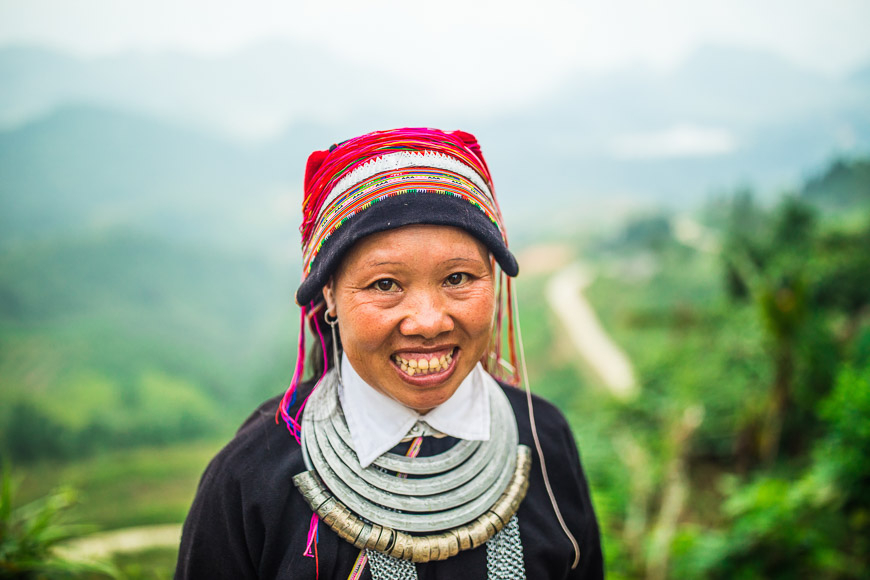
There are many different Dao people in Vietnam, however they are often grouped together as they share language, religion and culture. The most striking differences are in their garments, which have distinct details. Dao Chàm or Dao Áo Dài, are called so due to their tunics’ resemblance to the traditional Kinh dress. They wear simple head scarves with embroidery, and large, layered silver necklaces and earrings. You can meet Dao Chàm people in Nặm Đăm cultural villages in Ha Giang.
Red Dao
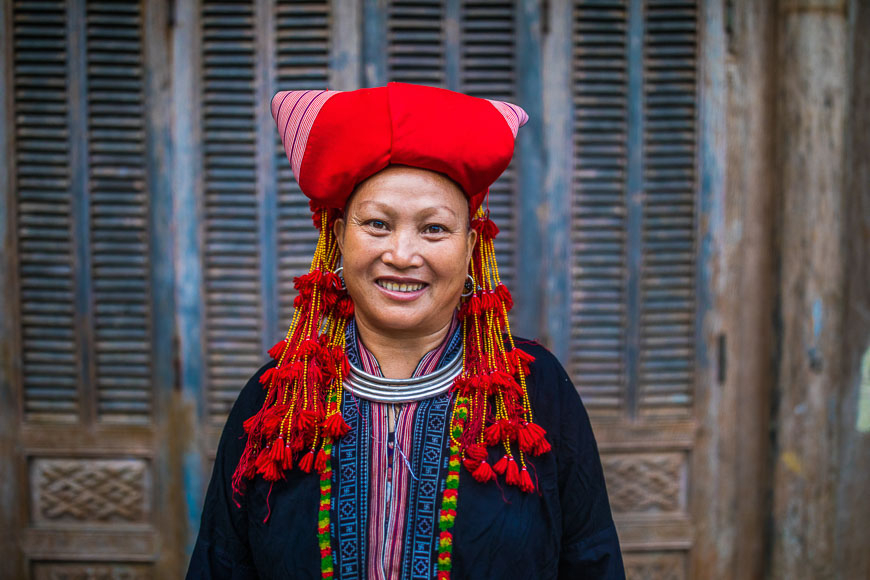
Red Dao clothing are trimmed with red and white borders, their trousers are intricately embroidered with motifs of family life and animist symbols, and their headdresses are often embellished with silver studs, coins and tassels. The Red Dao headdress is particularly striking, with a triangular red turban. Even more immense is the bridal headpiece, which is created from embellished red cloth and fashioned to a wooden base to completely drape over the face of the bride.
Tay
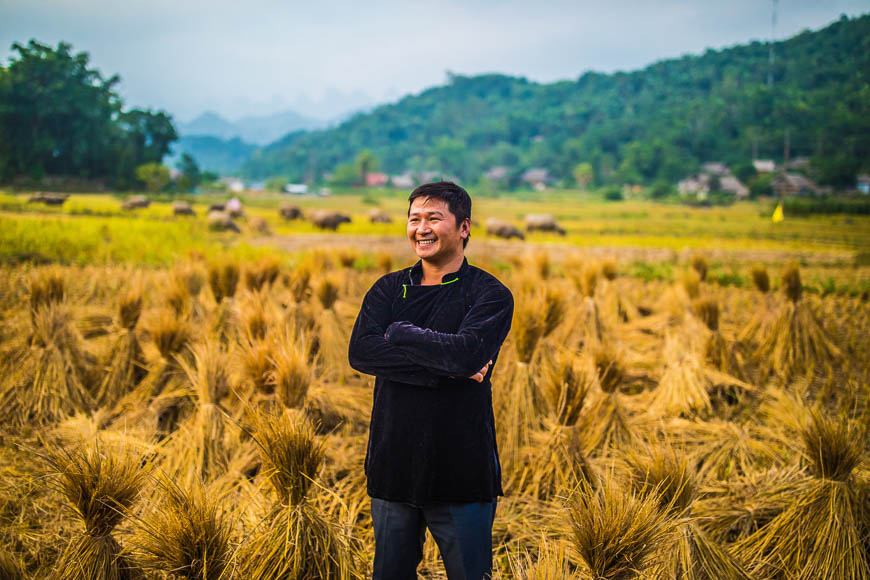
The Tay are the second largest ethnic group in Vietnam after the Kinh, and live throughout the north of the country. Their clothing is more humble than some of the other minority groups: simple black velvet or indigo-dyed jackets are paired with pants or skirts. Women wear a statement piece, usually an understated silver hoop necklace and a small black velvet headpiece. These jackets may have small embroidered details, but they are usually subtle.
H'mong
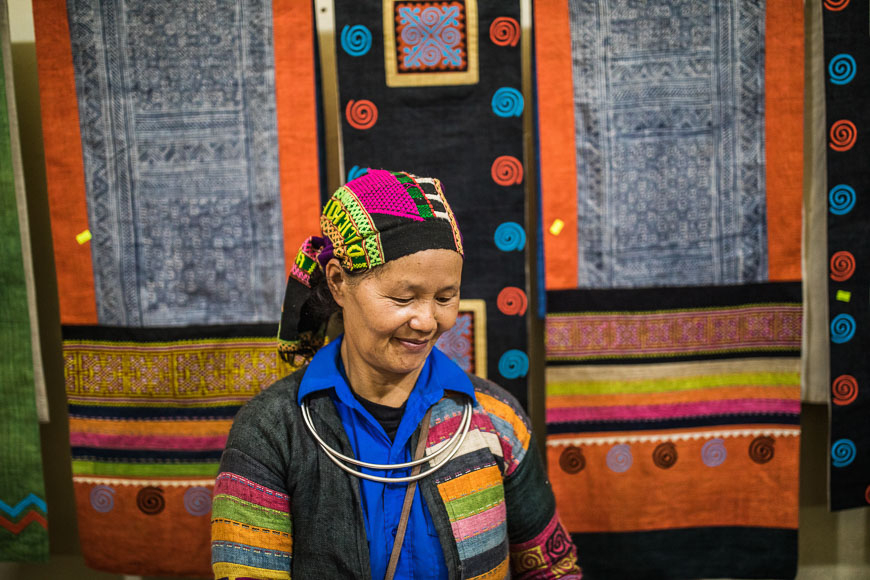
While Vietnam is home to several different H’mong groups, their costumes are unified in the use of handwoven hemp, stitching, dyeing and embroidery. H’mong women are taught embroidery from a young age, and once married are expected to sew clothing for every member of the family. White H’mong dress simply with spiral patterns for embellishment. The Flower H’mong are known for their intricate patterns, including elaborate reverse applique techniques.
Black H'mong
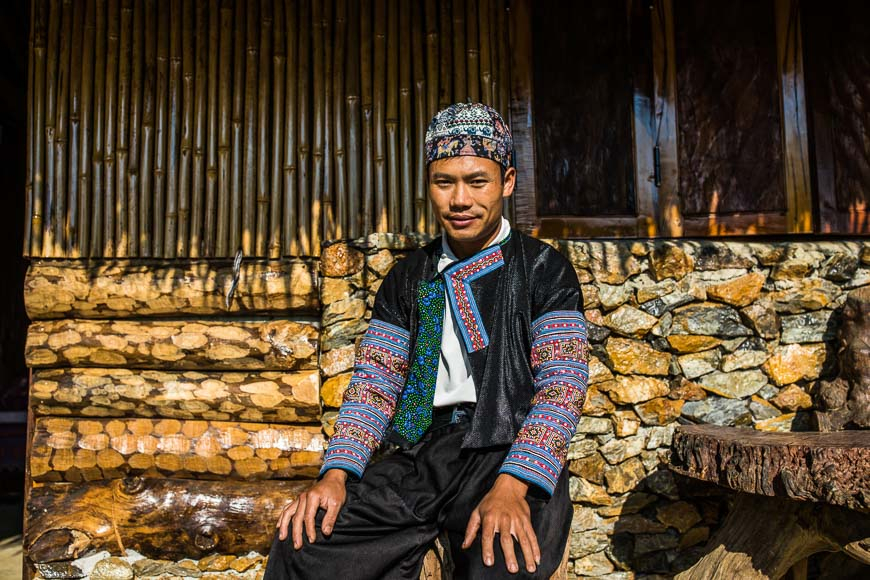
The Black H'mong are a subgroup of the H’mong minority, and usually make their homes in the mountainous areas of Northern Vietnam. The pride of any Black H'mong outfit is a shiny, sleeveless jacket where the hemp has been literally polished to perfection. Elaborate hand-embroidered and cross-stitched sleeves, collars, and belt sashes are then coordinated with beeswax batik skirts, making the Black H'mong people one of the most diversely skilled textile makers in Vietnam.
Ede
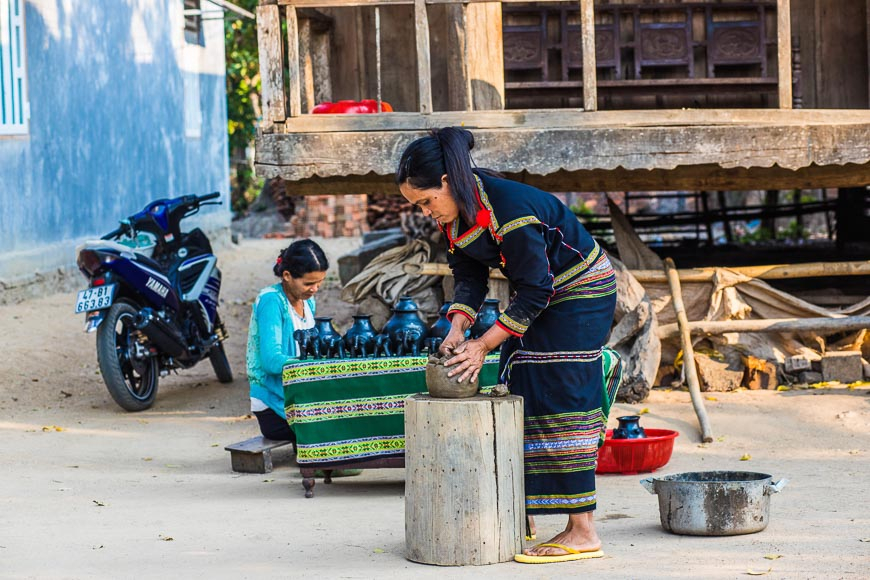
Mostly settled in the central province of Dak Lak, the Ede people have a striking costume. For women, the shirt is a boatneck with full sleeves and a sarong wrapped as a skirt. The top has delicate embroidery along the shoulders and hems, with small details such as gold bells or red pom poms on the ends. The fabric of the skirt is woven horizontal stripes of green, red, blue and white, with a little gold thread for flare. Men wear loincloths, with elaborate floral patterns along the front to show their strength.
Cham
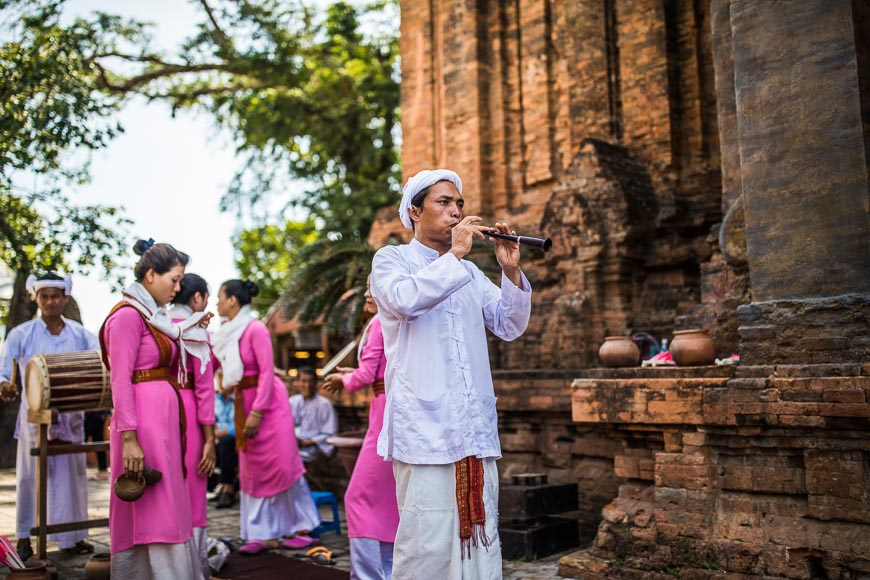
The Cham people in Vietnam live in the Mekong Delta and in some small groups along the coast of Central Vietnam. Their dress is mostly made from cotton in white or blue, with a sarong as the base for both men and women. Knotted at the waist, the sarong is topped with a tunic. These tunics are often more fitted in the sleeves for women and looser for men. Cham traditionally weave beautiful textiles in bold pinks or blues, which are saved for important rituals and ceremonies.




